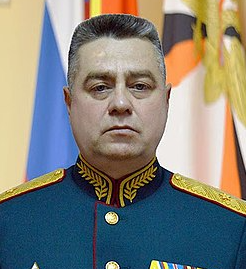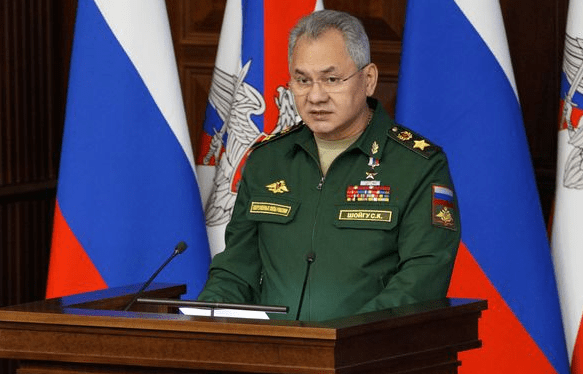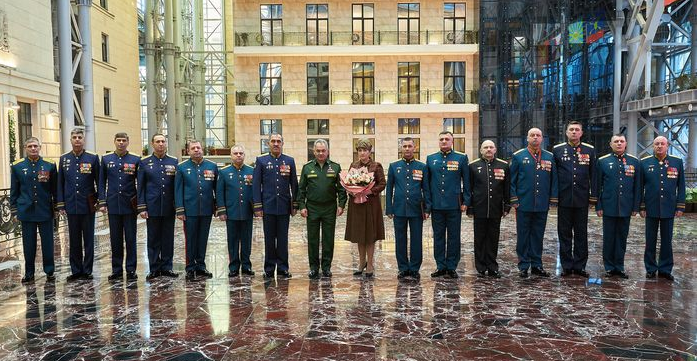
Recall NAFO making fun of a Russian blogger who asked “What air defense doing” after Ukraine attacked Saky airfield in August?
In Topwar.ru this week, Roman Skomorokhov essentially asked “What Russian Army doing?”
He stridently criticizes the high-level decision-making and conduct of Russia’s war on Ukraine. He perpetuates the trope about the Russian Army not actually being allowed to wage war. This, despite evidence of tens of thousands of war crimes.
Skomorokhov’s biggest question, however, is why Moscow isn’t using its entire million-man regular army in the war. Why aren’t mobilized reservists sent to the military districts instead of to the front in Ukraine. He predicts a slaughter. Perhaps he doesn’t realize Russia’s best combat units weren’t really that good and are now badly degraded. Maybe he doesn’t understand how little motivation Russian forces have. Or how much Ukrainian soldiers do.
Questioning of the Russian military has taken a sharp edge since the Russians were chased from Kharkiv, then suffered major losses in Donetsk (and most recently in the south toward Kherson). Rebukes like Skomorokhov’s are tolerated even though their vitriol exceeds that of independent Russian military journalists in the 1990s and 2000s.
Liberal media was shut down by Putin, but war hawks are unmuzzled, leading some to conclude their views are shared (and protected) by powerful folks in, or close to, the Putin elite.
Still, Skomorokhov’s editors make a post-script assertion that they aren’t “demeaning” the army or “sowing panic,” just highlighting the military’s mistakes so they can be corrected.
Here’s a translation.
Where generally is the Russian Army?
Since the Ministry of Defense still continues Operation “Silence of the Lambs,” one has to think up for oneself where Russia’s army is located generally and how it is fighting there. One could do a free essay on the theme “If I think it up myself, the worse for you,” but alas, statistics will have their place here.
What do we hear recently? Constant complaints about how the VSU1 is several times superior in manpower and equipment and as a result is developing its offensive success, seizing one populated point after another.
The Russian Army can’t offer proper resistance by virtue of these sad facts (mobilization of Ukrainian reserves and skillful leadership of the VSU by NATO officers) because it is constantly “regrouping,” which looks more like fleeing, supplying the VSU with the newest equipment in the framework of a “Russian lend-lease” program.
Here’s a just question: Why?
Why do we hear in the dispatches of military correspondents a strange litany of “Barsiki,”2 “Musicians,”3 NM LNR,4 NM DNR5 (but what the hell kind of policemen, Donbas tigers are there), Chechen “Akhmat-Force” subunits and only quite seldom slips “units of the 20th Army.” It’s clear we’re talking about the 3rd and 144th MRDs, there are also units of the 8th Army, but you really get the impression the Russian Army has been teleported and fights somewhere in another dimension. And there, yes, every day 200 VSU soldiers and officers are killed, another Su-25 is shot down and another “HIMARS” is destroyed.
If possible to say without sarcasm, then we really have some trash going on.
Everything happening reminds me of a duel between two boxers. For one side — the best of the Klichko brothers (good, let it be Vitaliy6, he speaks beautifully), for the other — Nikolay Valuyev.7 Everything’s in order with Klichko, but Valuyev will fight with shackles on his left leg and weights attached to him, with his right hand tied to his torso and his left eye blindfolded. And he won’t be allowed to hit Klichko in the head.
So how does the SVO8 look compared to the war Ukraine is conducting.
Generally, no matter how I tried, I couldn’t find a more or less sane definition of SVO. What the “special military operation” is in the view of the Russian command, it, the command, didn’t deign to explain. When the Americans conducted SVO “Desert Storm,” they didn’t hold back in any way and tore up Iraqis by all available means. In contrast to our army, which, to say it directly, has conducted a very strange war.
A very strange war, yes. Without destroying communications, wrecking bridges, power facilities, decision-making centers. That is, what all normal wars which end, begin with. And for some reason it was simply necessary to conduct this war with a military contingent of not more than 120 thousand men, not counting, it’s true, LDNR9 formations, volunteers, “musicians,” the Chechen contingent and “Barsiki.”
A question arises: if we don’t have enough manpower, why are 10% of the entire VS RF10 taking part in the SVO? What is the remaining 90% doing? And why instead of them is it necessary to send untrained (a couple firings is nothing) formations of mobilized reservists to the front? They aren’t even “Barsiki,” they are significantly weaker in terms of training!
What will this very same million men of the Russian Armed Forces be doing? Receiving their preferential mortgages?11 On maneuvers to show how our army is strong and powerful? That’s been shown already, as they say, in real time.
It’s forbidden to send conscripts to the SVO? So don’t.
Time to go through the figures
We expressly won’t take the Russian president’s order from August of this year12, but will take an earlier document as the baseline.
On 17 November 2017 Russian President V. V. Putin signed decree No. 555 “On establishing the manning of the Armed forces of the Russian Federation,” by which the size of the Russian Armed Forces was fixed at 1,902,758 personnel, including 1,013,628 [T.N. – uniformed] servicemen. The decree became effective on 1 January 2018.
Fact is, on 24.02.2022 the manning of the Russian Armed Forces was more than a million men. We’ll proceed from this.
Furthermore. Additionally our Defense Minister Shoygu in March of last year made an announcement from which it follows that “…in the Russian Army the number of servicemen on contract has more than doubled and exceeds 405 thousand, and the number of conscripts, on the other hand, has decreased.“
Here’s a very important figure: in March 2021 there were 405 thousand contract servicemen. This, naturally, doesn’t include the officer contingent which is considered separately.
But on December 22, 2021, the defense minister made another announcement: “Officer manning had reached 96%, and manning with servicemen on contract in other ranks — up to 99.4%. Their number exceeds the quantity of conscripts by more than two times.” All these figures were presented by TV Zvezda.13
So at the very beginning of the SVO the Russian Army was fully manned with officers and contractees, the latter twice as numerous as draftees.
Question: Why is it impossible for almost half a million contractees to fight in the SVO?
It’s good now that in the fleet most serve on contract. But the number of servicemen in the Navy with all its structures, including admirals, captains and cooks ashore is nearly 150,000. Accordingly, without our not especially useful Navy, the General Staff still has at its disposition almost a million soldiers and officers.
Of course, the RVSN,14 repair bases, depots — they aren’t going anywhere. Border security is now on the FSB,15 and there everything is somehow in order. Broadly I direct attention to the fact that Kiev’s promise, “Russia will choke in a wave of terrorist attacks” didn’t happen, and this means the FSB is working as needed. But the RVSN is 60 thousand men, engineering brigades and the like — in short, insignificant.
And here’s where the issue gets ominous
Suddenly it happens that it’s forbidden to touch this million in any way. It’s simply as unreal as it is dangerous. The million has to sit in its PPDs16 and at most go out for exercises. But any other use of the troops is fraught somehow.
And so it’s necessary to call up another 300 thousand.17 And send them to Ukraine or however we’ll call the new territories which we are slowly beginning to surrender to the enemy. At least, the first formations have already gone there.
Why will mobilized 35-45 year old (and even older) men be more effective than contractees who serve in the VS RF today — I don’t have an answer. With the level of training the army can provide today, this is simply unprepared people sent to slaughter. It’s greatly unfortunate but this is exactly what it is.
As a result we have a picture that’s more than strange. The main combat missions in Novorossiya (let’s call it this still) are carried out by LDNR formations, “musicians,” Chechen and volunteer formations and “BARS” reservists on the one hand and units of the 8th and 20th Russian armies on the other.
How mobilized men whose military service was twenty years ago can be useful here, I can’t hazard to say. However they are sending them not to the Central or Eastern Military Districts to free up line units that are occupied for some unknown reason, but to the west.
The defense ministry’s conduct is as always: very strange and illogical actions against a backdrop of deathly silence. But evidently there they seriously believe that a 40-year-old mobilized man will be more effective than a contractee of 22-24. More uncanny stupidity doesn’t come to mind, but alas, they don’t explain anything to us, all information comes in the form of speculation, rumors and gossip.
Why is it forbidden to take from the Eastern Military District those units which shone so brightly in the recent “Vostok-2022” exercises? There they simply beautifully showed their level of training, what’s the problem? Apparently, there are some kind of problems because the million-man army continues to sit in its PDDs, but we read every day about how the VSU has superiority in everything.
This is completely incomprehensible. On paper we have more of everything than the VSU, we have the most. More aircraft, tanks, guns, MLRS, missiles. More trained soldiers and officers. Just more.
But under the conditions of this strange war, which our generals draw for themselves, we don’t have the possibility of using the million-man army. And into battle the mobilized will go, patriots equipped at their own expense, whom they’ll take from the lathe, or from the field. Because the biomass of systems administrators and marketing people have already left Russia’s territory.
Generally, our military department continues to demonstrate to everyone that its conceptions are of a higher plane of understanding than the common man. They are somewhere out there, in transcendental heights, incomprehensible to the mind of an ordinary man.
Evidently, the Ukrainians also don’t understand and act not so much brilliantly as effectively. And they occupy populated points which are now located on Russia’s territory. And they’re already beginning to shoot Russian citizens there.18
Generally there are very many questions, but we wish, of course, to get an answer to the most burning question: Where is our million-man army and why is it impossible to use it in the war in Ukraine?
P.S. The editors of “Military review” believe its our duty to say that we are now talking about problems and shortcomings not for the sake of demeaning the army and sowing panic, but so that the necessary conclusions will be made and mistakes corrected today and not allowed tomorrow. We express hope for understanding and regret for those who didn’t get it.
__________________
1 Ukrainian Armed Forces.
2 Barsiki means Russian reservists from the MOD RF’s Army Special Combat Reserve (BARS) system initiated about one year ago. Bars also means leopard, hence the subsequent reference to “Donbas tigers.”
3 Russians often refer to the Wagner mercenary group (named for composer Richard Wagner) as the “musicians.”
4 “People’s Militia of Luhansk People’s Republic.”
5 “People’s Militia of Donetsk People’s Republic.”
6 Mayor of Kyiv and former professional heavyweight boxer.
7 Russian State Duma deputy and former WBA heavyweight champion.
8 Специальная военная операция, special military operation.
9 Luhansk Donetsk People’s Republics.
10 RF Armed Forces.
11 Started in the mid-2000s, MOD RF program that puts money into a mortgage savings account each year for officers and soldiers who sign (and re-sign) service contracts.
12 Putin’s decree — not an order — from August 25 established that, from January 1, 2023, uniformed personnel of the RF Armed Forces will increase by 137,000 to 1,150,628. Total personnel will be 2,039,758.
13 MOD RF’s television channel.
14 Missile troops of strategic designation, often Strategic Rocket Forces in English.
15 Federal Security Service, inheritor of the KGB’s internal security mission.
16 Points of permanent basing, home garrisons.
17 300,000 is the lowest figure publicly mentioned for mobilized Russian reservists. The eventual number could be as high as one million.
18 The author is fully invested in the notion that Putin’s illegal “annexation” of Luhansk, Donetsk, Zaporizhzhia, and Kherson makes these regions Russian territory. There’s no evidence the VSU has harmed any non-combatant there who claims to be a Russian citizen. It has, however, been shown clearly that the Russian Army intentionally killed civilians during its invasion of Ukraine.













